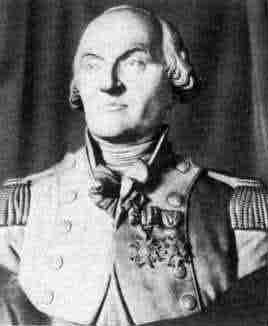Coulomb
The Grandfather of Soil Mechanics

Charles Augustin de Coulomb
|
World Wide Web of Gotechnical Engineers - Hall of Fame |
Coulomb
The Grandfather of Soil Mechanics

Charles Augustin de Coulomb
![]()
Coulomb in a nutshell:
Born: 14 June 1736 in Angoulême, France
Died: 23 Aug 1806 in Paris, FranceMade significant contributions to Civil engineering (structures, hydraulics, and geotechnical), natural sciences and physics (mechanics, electricity and magnetism).
![]()
Coulomb's Contribution to Geotechnical Engineering:
Coulomb addressed the Academy of Science (Paris, 1773) presenting a modest "essay on the application of the rules of maxima and minima to certain statics problems relavant to architecture." This "essay," printed three years later by the Academy, is the earliest published soil mechanics theory; it started the active and passive pressure concepts.
The friction concept was known (newly invented) at the time, and Coulomb added the cohesion term to it. Though he didn't write the shear strength equation as we know it today, he used it almost the same way.
He served as the "Engineer of the King" in Paris and helped the design and construction of many structures--this is what has led to his involvement with soils. He needed a theory for the calculation of lateral earth pressures on retaining walls, so he derived one himself. He used the newly invented calculus in this work -- it indeed involves a complex differentiation operation. But for this application he was awarded by being admitted to the Academy of Science.
![]()
Coulomb, Ingenieur du Roi:
Coulomb spent 9 years as a military engineer in the West Indies but, according to Ref. 2, "his health suffered so, when the French Revolution began, he retired to the country to do scientific research." It seems to me that his retirement was not really voluntary (see the story in our dark side page).
Coulomb worked on applied mechanics but he is best known to physicists for his work on electricity and magnetism. He established experimentally the inverse square law for the force between two charges which became the basis of Poisson's mathematical theory of magnetism.
Coulomb also wrote on structural analysis: the fracture of beams, the fracture of columns, the thrust of arches. He also has a paper on the way sap circulates inside a tree.
![]()
References
![]()
